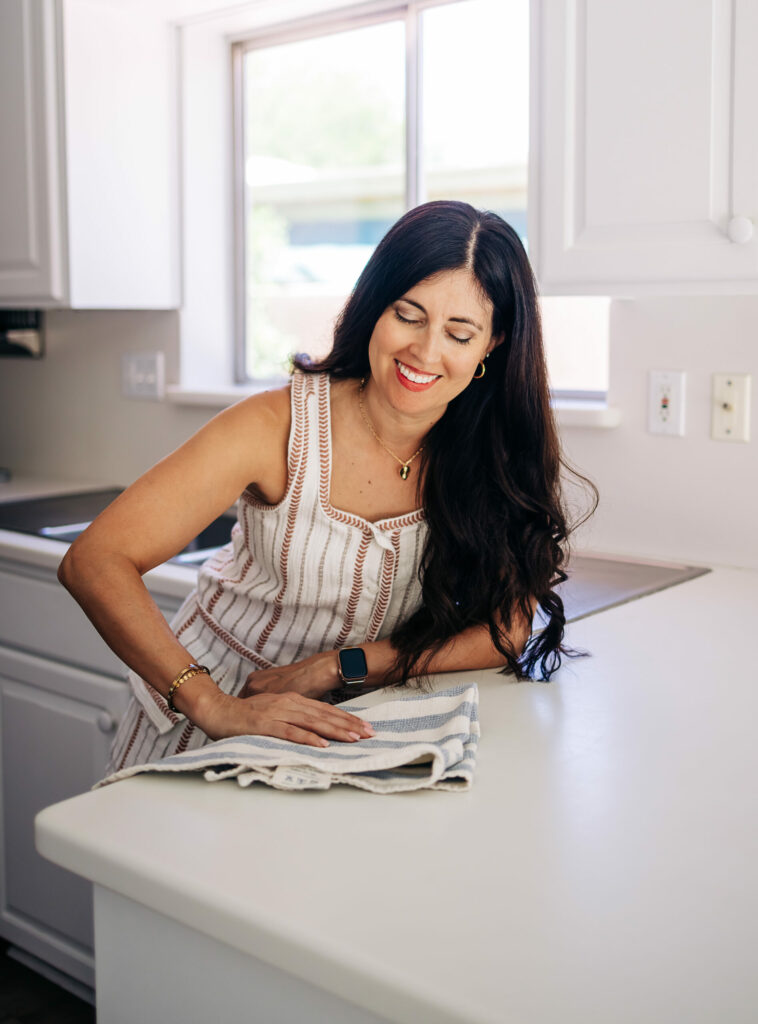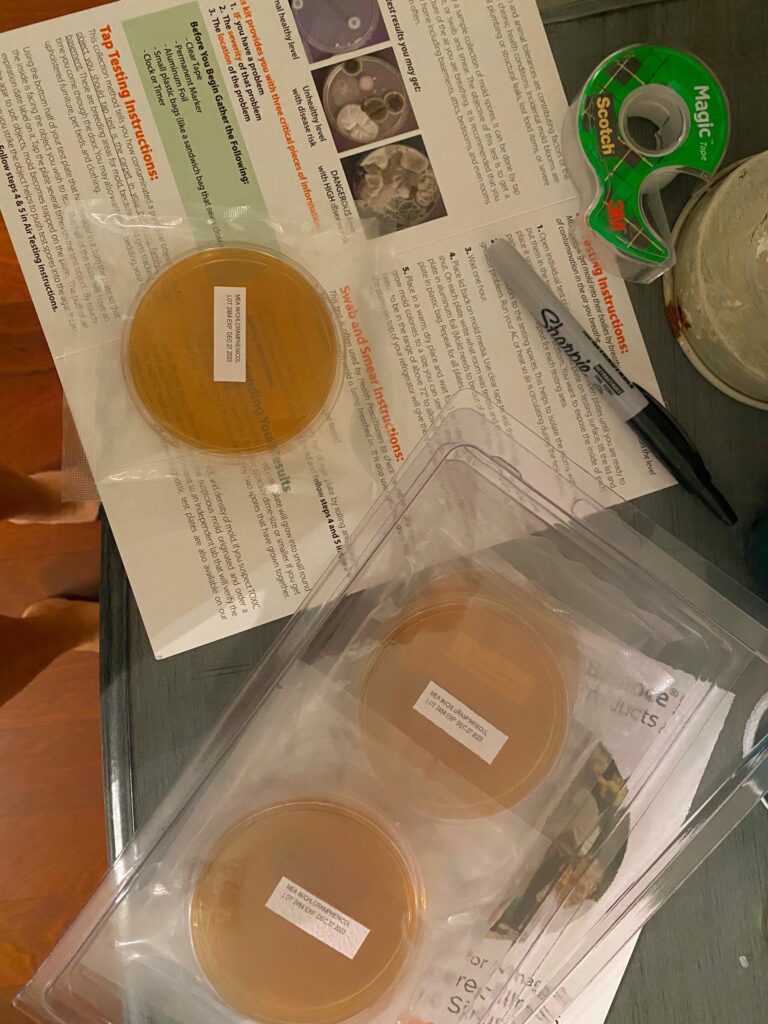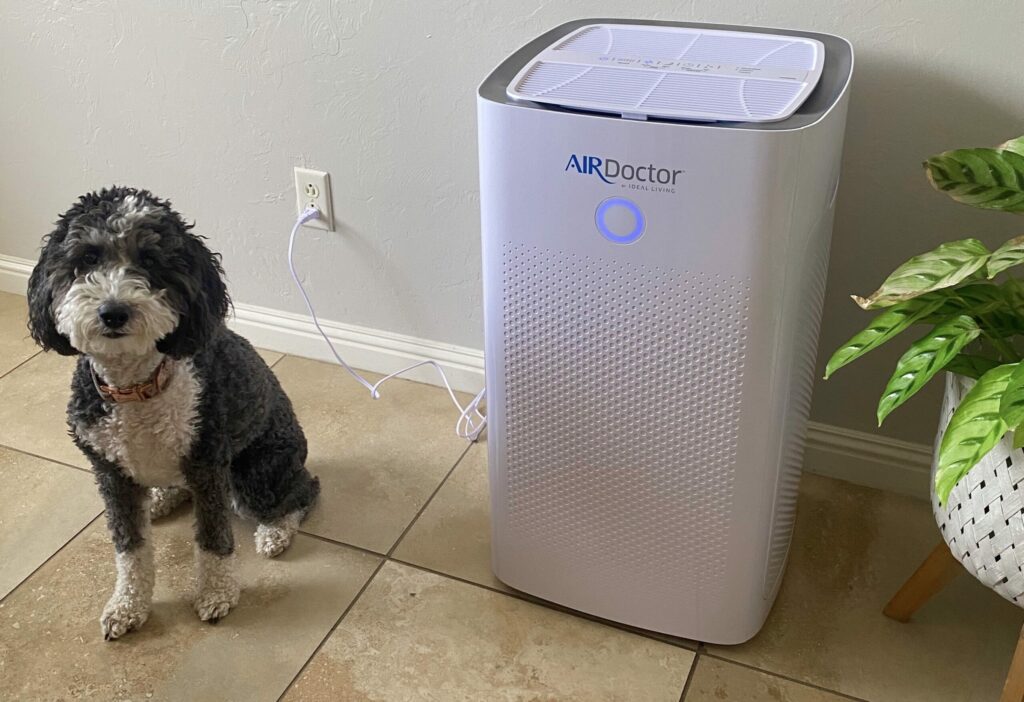Sharing some tips on how to detox your home with simple, effective swaps to reduce toxic chemicals, improve indoor air, and create a healthier living space.
Hi friends! What’s going on this week? I have a stacked morning with client calls and appointments, but am looking forward to the planetarium with P later today.
Today, I wanted to chat a little bit about healthy changes we can make at home and some of my favorite steps to create a cleaner living space. One of the biggest sources of toxins isn’t in our kitchen with the foods we eat; it’s in our home environment.
Everyday items, from the cleaning products we use to the candles we light, often contain toxic chemicals that can irritate our skin, disrupt hormones, and contribute to long-term health problems. These compounds also affect the planet, impacting waterways, soil, and even indoor air quality.
A healthier home doesn’t have to mean throwing everything out overnight. Today, I’m going to share some tips on how to detox your home so you can lower your exposure to harmful substances while keeping things practical, affordable, and sustainable. Of course, I always love hearing about your favorite tips and products, too, so don’t be afraid to shout them out in the comments below!
How to Detox Your Home
Some of the things I wanted to chat about:
The most common environmental toxins in our homes
Simple ways to identify and test for them
Practical swaps and habits to reduce your exposure
The goal isn’t perfection; it’s progress. It’s SO easy to get overwhelmed, but the reality is that even a few small changes can have a huge impact over time. If you’re also working on cutting down screen time and stress triggers, pair this with my digital detox tips for a more peaceful, less toxic home.
What Are The Most Common Environmental Toxins In Our Homes
Here are some of the biggest culprits that sneak into our everyday routines:
Toxic chemicals in cleaning products: harsh detergents, ammonia, bleach, and chemical disinfectants.
Volatile organic compounds (VOCs): released from certain adhesives, sealants, and traditional based paints.
Flame retardants: added to sofas, mattresses, curtains, and rugs to slow fires – but often linked to hormone disruption.
Plasticizers such as BPA and phthalates: found in plastic food containers, single-use water bottles, and cling wraps.
Pesticide residues: from lawn treatments, pest sprays, and even tracked in on shoes.
Synthetic fragrances: in candles, plug-ins, air fresheners, and personal care products like body lotion or hair spray.
Heavy metals: possible in older pipes, imported ceramics, or poorly made stainless steel cookware.
Indoor air pollution: caused by dust, cooking fumes, smoke, off-gassing furniture, and poor ventilation.
How To Test For Toxins In Your Home
Check Labels and Ingredients
Start by reading the labels on your household and care products. The Environmental Working Group (EWG) offers fantastic resources. Their “Skin Deep” database for personal products and their Guide to Healthy Cleaning for household supplies. These tools rate products based on toxicity so you know what’s safer to buy. I’ve also hear great things about the Olive holistic food scanner app.
Use At-Home Test Kits
Affordable kits can test for common hazards such as lead, radon, and mold. These are especially important for older homes or basements that tend to collect moisture. This is the mold test that changed my life; it’s why we had our couch hauled away the day we opened the pucks and also replaced our carpet with engineered wood floors.
Evaluate Indoor Air Quality
Humidity monitors and at-home air quality sensors can help detect high particulate matter or VOCs. If you cook frequently or have pets, you may notice more particles circulating in the air.
Look for Certifications
Seek out GREENGUARD Gold-certified furniture and low-VOC or zero-VOC based paints. For food storage and water bottles, look for BPA-free or high-quality glass and stainless steel options.
How To Detoxify Your Home
Switch to Safer Cleaning Products
One of the easiest and most affordable places to start is your cleaning products. Replace heavy chemical sprays with plant-based formulas made from vinegar, baking soda, and essential oils. If you want a shortcut, look for brands rated highly in the EWG’s Guide to Healthy Cleaning. My go-to for almost everything is Branch Basics. One bottle of the concentrate lasts a long time! I also like the Rosey brand from Thrive Market <— this link gets you 40% off your first order.
Improve Indoor Air Quality
Indoor air pollution can build up quickly. Open windows daily (even just 10 minutes helps), avoid synthetic air fresheners, and consider adding an air purifier with a HEPA filter to trap allergens, dust, and other fine particles. We have two types in our house: Air Doctor and Jaspr. For some reason, I was SO nervous about setting up air filters before we bought them. You literally take them out of the box, unwrap the filter and replace, then plug it in. Our house smells clean and fresh and it’s made a huge difference with allergies and colds.
Also, you don’t need to get a ton of air filters at once; we’ve purchased ours over time. Start with the room where you spend the most time (like the living room or office). An hour or so before you go to bed, put it in your bedroom so it’s in there while you sleep. It’s ok to move them around until you purchase more; ideally one in each bedroom and in main living spaces.
Swap out your cookware
Instead of using aluminum pans and cookware, try stainless steel and non-coated ceramic. I love OurPlace pots and pans and Caraway cookware and baking dishes.
Choose Natural Materials
Whenever you replace furniture, rugs, bedding, or curtains, opt for natural materials such as untreated wood, organic cotton, linen, and wool. These items usually contain fewer flame-retardant treatments and off-gassing chemicals.
Swap Plastic Food Storage for Glass or Stainless Steel
Reduce your exposure to BPA and phthalates by storing leftovers in glass containers or high-quality stainless steel lunch boxes and water bottles. These are my favorite glass meal prep containers.
Ventilate and Dust Frequently
Ventilating your home helps lower humidity and flush out VOCs. Regular dusting and vacuuming with a HEPA filter vacuum reduce allergens and toxin build-up from flame retardants and household dust.
Update Old Paint and Renovation Materials
If your home has older based paints, it’s worth having them tested for lead or VOCs. Hire professionals for safe removal or use a sealant to lock in harmful particles until you’re ready to renovate.
Be Mindful of Personal Care Products
Our care products – from body wash to makeup – often contain hidden toxic chemicals that absorb through the skin. Use the EWG’s Skin Deep database to find safer alternatives. My go-tos are Olive Tree People and OneSkin.
Additional Tips for a Healthier Home Environment
Keep humidity between 40–50% to reduce mold growth.
Wash new clothes and linens before use to remove manufacturing residues.
Avoid paraffin candles or plug-in air fresheners; choose beeswax or soy candles without synthetic fragrances. I also love oil diffusers; NOW has the best essential oils (my code is FITNESSISTA).
Add indoor plants like peace lilies, spider plants, or snake plants to help improve indoor air naturally.
Take off shoes at the door to avoid tracking in pesticides and heavy metals from outdoors.
It seems like a LOT when I type everything up.. but you don’t have to do it all at once.
Start with one area – maybe your cleaning products or water bottles – and build from there. I also like to wait until I run out of something to replace it with a safer option. Over time, these small changes add up to cleaner indoor air, less exposure to toxic chemicals, and fewer potential health problems for your family.
Tell me, friends: what’s the first swap you’re excited to make? What’s a swap in your home that you think has made a huge difference?
xo
Gina
Also, if you’d like a full checklist I made with my favorite healthy brands and products (+ discount codes) you can download it for freeeee here.
Trending Products








